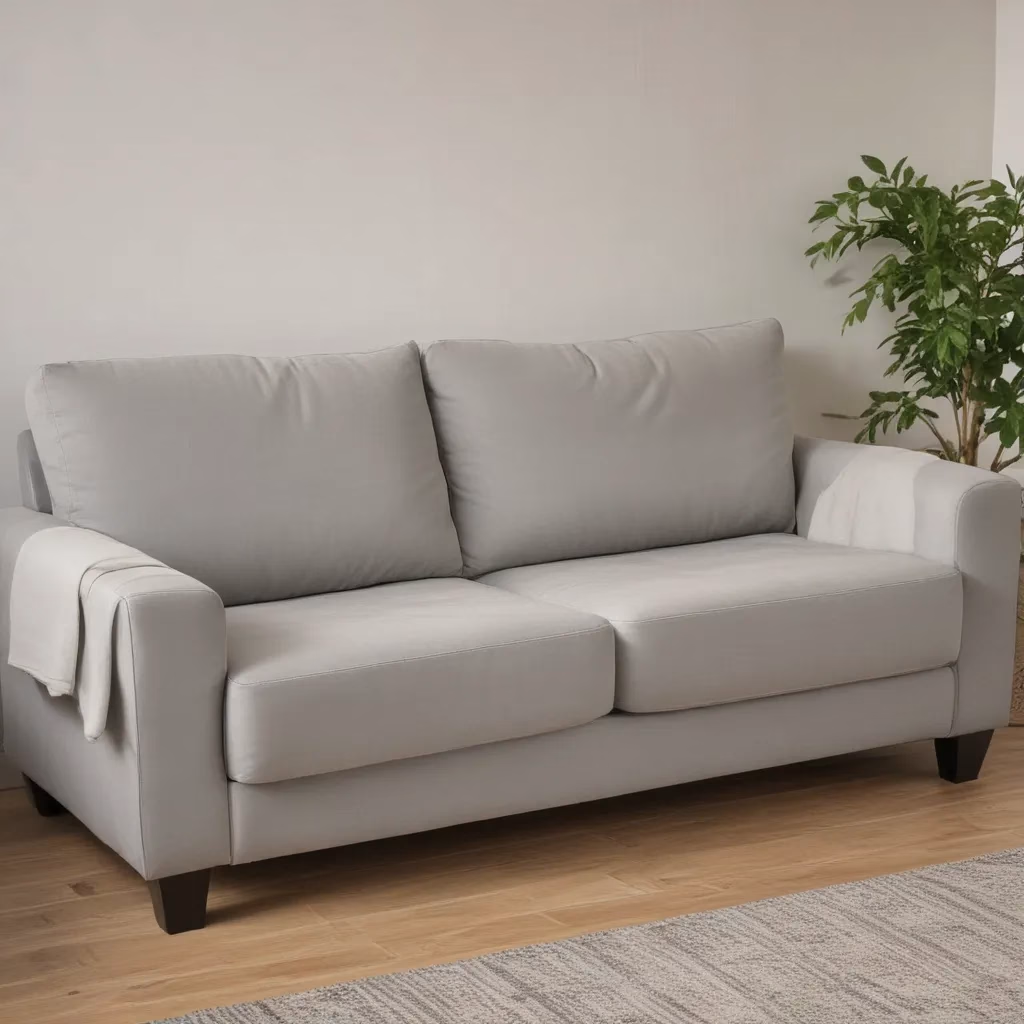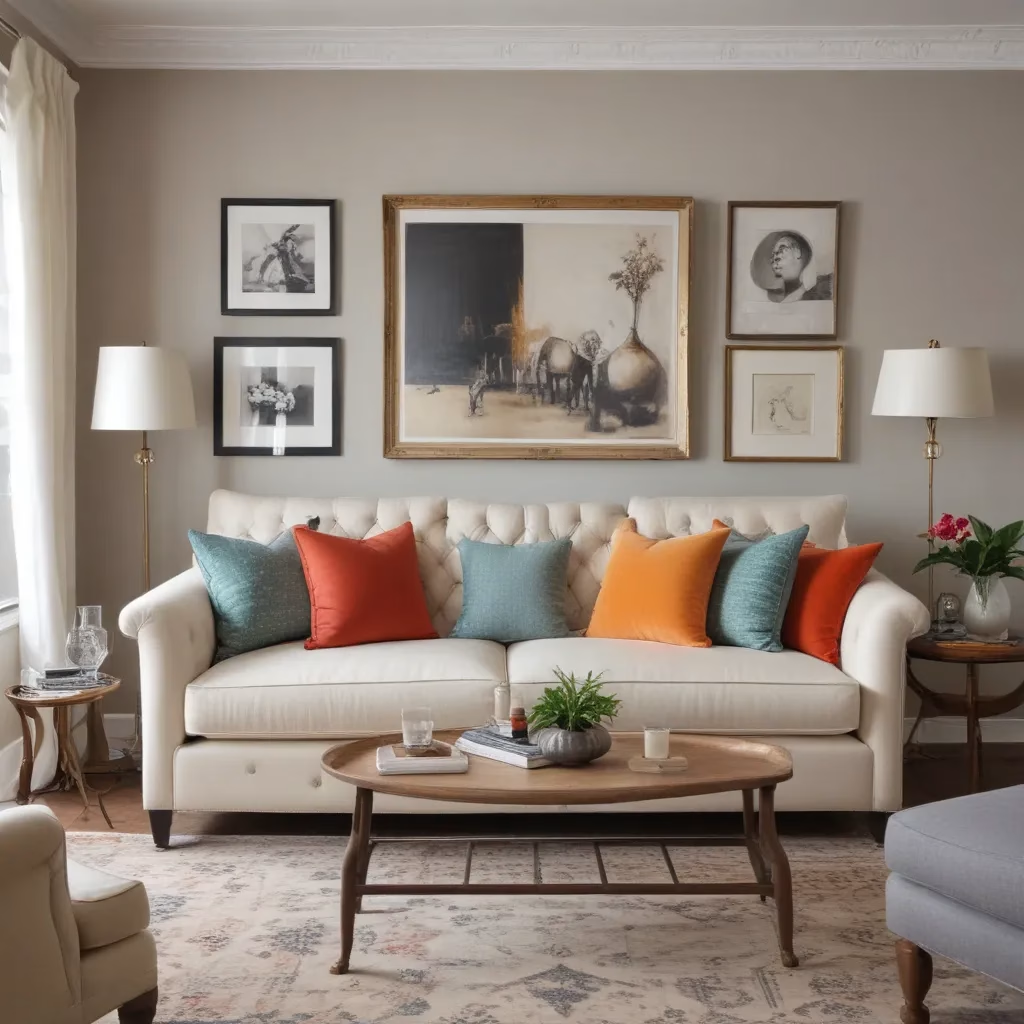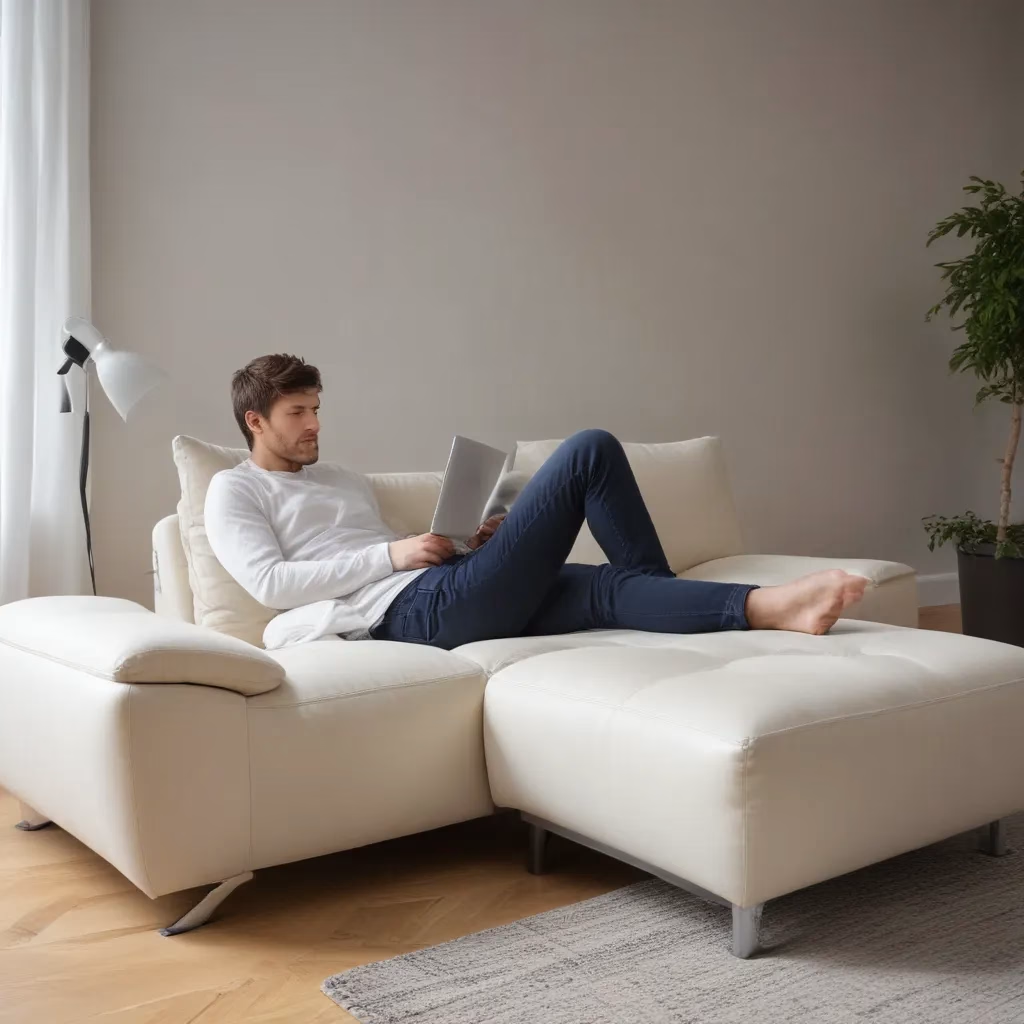
As an experienced furniture consultant and interior design writer, I know that the sofa is the heart of any living room. It’s where we sink in to relax, curl up with a good book, or host game nights with friends. But over time, even the most stylish and beloved sofas can start to lose their comfort and structural support. In this comprehensive guide, I’ll share expert tips and insights on maintaining sofa comfort and functionality for years to come.
Fabric and Upholstery Selection
When it comes to sofa comfort and durability, the fabric and upholstery are critical considerations. Performance fabrics like Crypton and Sunbrella have advanced stain, moisture, and wear resistance, making them ideal for active households with kids and pets. Their tight weaves and protective treatments can withstand heavy use without sacrificing softness or appearance.
For a more luxurious feel, velvet and leather offer a sumptuous, tactile experience, though they may require more specialized care. Velvets should be professionally cleaned to preserve their plush pile, while leathers need regular conditioning to maintain their supple hand. Ultimately, the right upholstery depends on your lifestyle and aesthetic preferences.
Regardless of fabric type, proper upholstery maintenance is key to extending your sofa’s lifespan. Rotate and fluff cushions regularly, spot-clean spills immediately, and consider professional deep-cleans every 1-2 years. Investing in a quality sofa cover or slipcover can also protect against fading, stains, and general wear and tear.
Living Room Layout Tips
Where you position your sofa within the living room can significantly impact its comfort and usability over time. Aim to create a balanced, harmonious flow that supports relaxation and conversation. Floating the sofa away from walls allows for easy access and promotes a cozy, intimate atmosphere. Pairing it with a well-placed coffee table and complementary armchairs or accent chairs encourages natural seating arrangements.
Be mindful of traffic patterns, too. Avoid blocking doorways or creating bottlenecks that could wear down the sofa’s high-traffic areas prematurely. And if you have a TV in the room, position the sofa at an optimal viewing angle – not too close, not too far.
Ultimately, the goal is to find that sweet spot where the sofa looks beautiful and functions seamlessly within the space. With a little planning, you can create a living room that’s both visually appealing and supremely comfortable.
Sofa Cleaning and Maintenance
Regular cleaning and maintenance are essential for preserving a sofa’s comfort and appearance over time. Start with a consistent routine – vacuum the cushions and wipe down the frame weekly to remove dirt, hair, and crumbs. For deeper cleans, spot-treat stains immediately with a gentle, fabric-safe cleaner, and shampoo the upholstery every 6-12 months.
When it comes to regular fluffing and plumping, the approach depends on the sofa’s construction. Single-cushion sofas require a bit more hands-on attention, as you’ll need to manually reshape and smooth the upholstery. Tufted or multi-cushion designs, on the other hand, may simply need a quick fluff and redistribution of the fill.
And don’t forget about the sofa frame itself. Wipe down the wood or metal with a damp cloth to remove dust and fingerprints, and consider applying a light polish or conditioner to maintain a fresh, vibrant appearance.
By staying on top of basic cleaning and care, you can help your sofa retain its comfort and support for years to come.
Styling for Comfort and Aesthetics
Thoughtful styling can take a sofa from “just okay” to truly exceptional. Start by layering in plush, cozy textiles like throws, pillows, and area rugs. Not only do these accents add visual interest, but they can also enhance the overall comfort level.
When selecting throw pillows, look for down-filled or memory foam inserts that provide the perfect balance of support and plushness. Arrange them in a variety of sizes and shapes to create a inviting, lived-in look. And don’t be afraid to mix patterns and colors – this adds depth and personality to the space.
Placing a well-sized area rug underneath the sofa can also contribute to the room’s coziness. Choose a rug that extends beyond the sofa’s front legs, creating a defined seating area. Soft, high-pile textures like wool or shag will feel luxurious underfoot.
Finally, consider incorporating accent tables within easy reach of the sofa. These provide convenient surfaces for beverages, books, and remote controls, enhancing the overall functionality and comfort of the space.
By thoughtfully layering textiles, accessories, and furnishings, you can transform a basic sofa into a true sanctuary for relaxation.
Sofa Buying Considerations
When it’s time to purchase a new sofa, there are several key factors to consider beyond just aesthetics. Construction quality is paramount – look for sturdy, kiln-dried hardwood frames, reinforced joints, and high-density foam cushions for long-lasting comfort and support.
Equally important is finding the right size and scale for your living room. Measure the available floor space carefully, accounting for traffic flow and any other furniture placement. A sofa that’s too large can overwhelm the room, while one that’s too small may feel out of proportion.
The sofa’s shape and configuration also play a role in comfort and functionality. Classic three-seater styles offer a versatile, crowd-pleasing option, while sectionals and chaise designs provide more opportunities for lounging and relaxation. Consider how you and your family intend to use the sofa, and choose accordingly.
Finally, don’t overlook the importance of testing for comfort. If possible, visit a showroom or furniture store to physically try out potential sofa options. Pay attention to the seat depth, back height, and overall ergonomics – these details can make a significant difference in your long-term satisfaction.
By prioritizing both form and function during the buying process, you can invest in a sofa that will provide exceptional comfort and support for years to come.
Living Room Décor Trends
As interior design tastes evolve, so too do the styles and silhouettes of sofas. While classic, timeless shapes will always have a place, it’s fun to stay current with the latest living room décor trends.
In recent years, we’ve seen a rise in modular, customizable seating that allows homeowners to configure their sofas for their unique spaces. Versatile sectionals and deep-seated designs offer the ultimate in lounging comfort. Muted, earth-tone palettes and natural textures like linen and bouclé mesh beautifully with this relaxed, California-cool aesthetic.
On the other end of the spectrum, some homeowners are gravitating towards sleek, mid-century modern silhouettes with slim, tapered legs and low profiles. These streamlined sofas pair perfectly with vintage-inspired accents and minimalist, Scandinavian-influenced décor.
No matter your personal style, the key is finding a sofa that aligns with your living room’s unique character and your own comfort preferences. By staying attuned to evolving design trends, you can double-check that your sofa continues to feel both visually appealing and functionally supportive.
Customizing Sofa Appearance
If your beloved sofa is starting to show its age, don’t despair – there are plenty of ways to breathe new life into its appearance. Reupholstering the piece can transform its look and feel, allowing you to experiment with bold new fabric choices or classic, time-honored patterns.
Alternatively, slip covers offer a more budget-friendly solution. These removable fabric covers fit snugly over the existing sofa, shielding the original upholstery from further wear and tear. Slip covers come in a wide array of styles, from crisp, tailored silhouettes to soft, slouchy fits.
For a more DIY approach, consider refreshing the throw pillow selection. Swapping out the existing cushions for a new color palette or textural pattern can instantly revive the sofa’s aesthetic. This is an easy, low-cost way to experiment with different design directions.
And don’t forget about the frame itself. A simple coat of paint or wood stain can dramatically alter the sofa’s visual character, allowing it to better complement evolving décor schemes. Just be sure to use products appropriate for the underlying material.
With a little creativity and elbow grease, you can transform even the most well-loved sofa into a fresh, stylish centerpiece for your living room.
Long-Term Sofa Care and Longevity
Ultimately, maintaining a sofa’s comfort and support over time requires a multi-faceted approach. Beyond regular cleaning and styling, there are a few additional steps you can take to extend its lifespan.
For starters, rotate and flip the cushions on a regular basis. This helps to evenly distribute wear and prevent premature sagging or indentations. You can also consider adding lumbar or neck support pillows to help maintain the sofa’s ergonomics.
If certain areas of the sofa start to show significant wear, you may need to address the underlying structural issues. Tightening loose screws, reinforcing joints, and replacing worn-out springs can all help restore the frame’s stability and integrity.
And when it comes time for major repairs or a full-scale replacement, be strategic. Invest in a high-quality sofa constructed with durable, long-lasting materials. With proper care and maintenance, your new centerpiece should provide years of comfortable, stylish enjoyment.
By prioritizing sofa comfort, aesthetics, and longevity from the very beginning, you can create a beloved living room that adapts gracefully to your evolving needs and design preferences. After all, a well-loved sofa is the heart of any home.
Example: Living Room Makeover Series with Modular Sectionals



